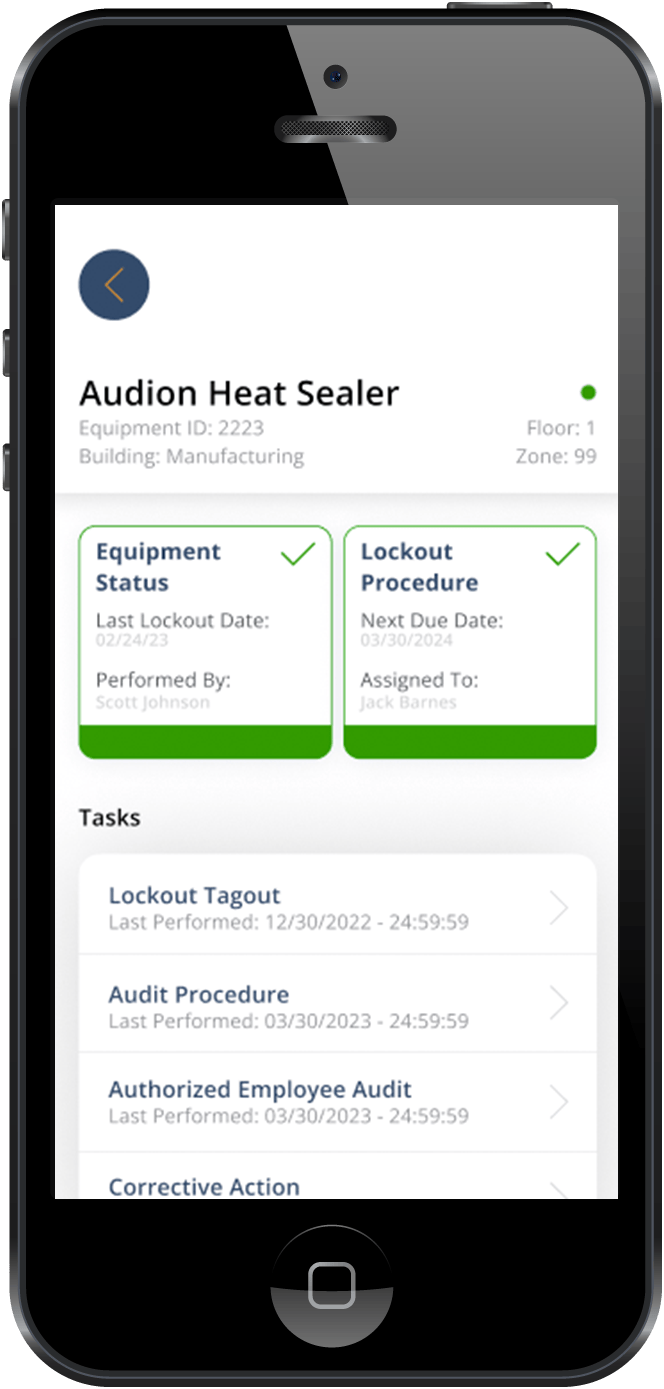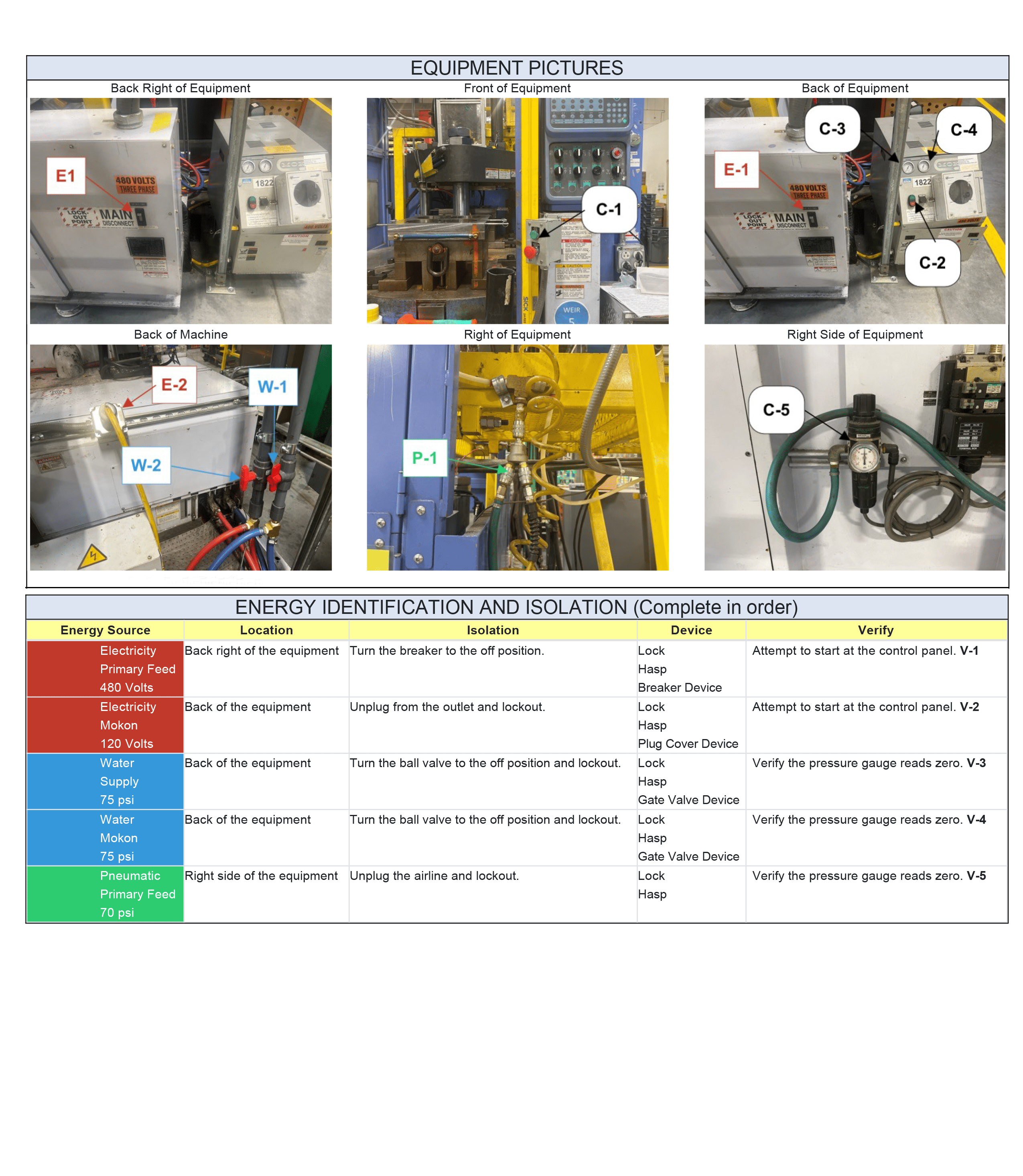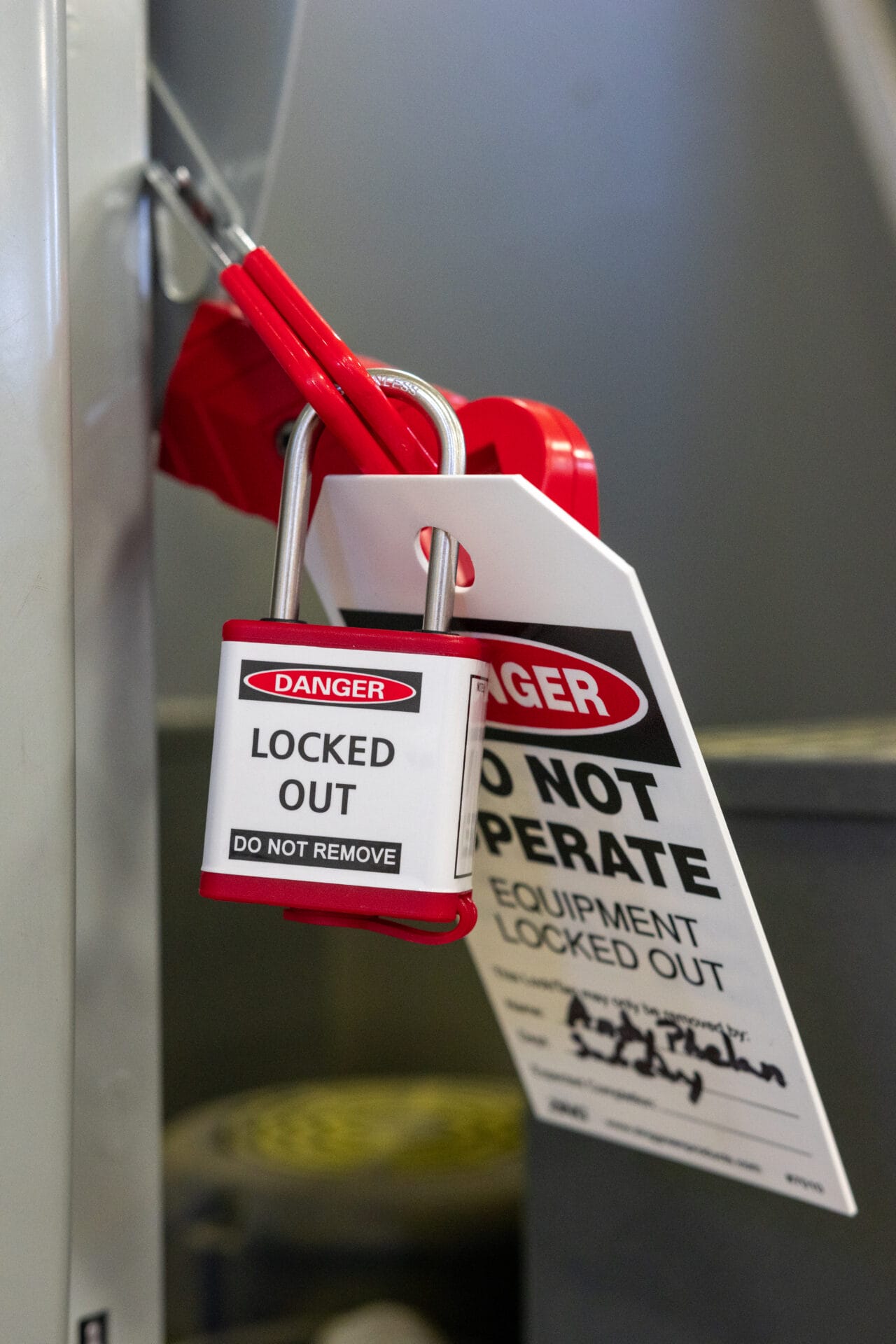This article walks you through the steps of formulating a customized lockout tagout program to fit your organization’s needs.
Lockout Tagout Procedures
Each organization will have different needs, based on their industry and the associated equipment. For that reason, each company must design their own LOTO program that fits their circumstances.
Though there is a wide range of industries and jobs that require safety measures such as a LOTO program, there are basic actions that can taken by anyone who is seeking to develop a reliable program.
Creating effective lockout tagout procedures involves several key steps. Here’s a general outline to help you develop your own procedures:
Identify Equipment: Identify the equipment or machinery for which LOTO procedures are necessary. Make a comprehensive list of all equipment that requires locking out for maintenance or repair work.
Assess Energy Sources: Identify all energy sources associated with each piece of equipment, such as electrical, hydraulic, pneumatic, or mechanical. Determine the specific steps required to safely isolate and control these energy sources. Each step will be documented in the lockout tagout procedures.
Develop Written Procedures: Create detailed step-by-step written LOTO procedures for each equipment and energy source. These procedures should include the following elements:
- Equipment preparation: Outline the necessary steps to safely shut down the equipment, including releasing or capturing any stored energy.
- Isolation procedures: Describe how to isolate each energy source to prevent re-energization during maintenance or repair work.
- Lockout procedures: Explain the steps for attaching lockout devices to energy-isolating devices, including the use of specific lockout devices and the placement of locks.
- Verification procedures: Specify the process for testing and verifying that energy sources have been properly isolated before work begins.
- Tagout procedures: Describe how to securely attach tagout devices, including the use of tags or labels that indicate that the equipment should not be operated.
- Equipment restoration: Outline the steps to safely restore the equipment to operation after the completion of maintenance or repair work.
Involve Employees: Consult and involve employees who are most familiar with the equipment and work processes in the development of the lockout tagout procedures. This will help ensure that the procedures are accurate and practical.
Provide Training: Train and educate all employees who may be involved in lockout tagout procedures. Make sure they understand why the procedures are necessary, how to implement them, and the potential risks associated with failure to follow the procedures.
Periodically Review and Update: Regularly review and update the LOTO procedures as needed. This should include reviewing and incorporating any changes in equipment, machinery, or work processes.
Communicate and Enforce: Communicate the lockout tagout procedures to all relevant employees and enforce strict adherence to the procedures. Emphasize the importance of following the procedures every time maintenance or repair work is conducted.
It is essential to tailor your lockout tagout procedures to the specific equipment and energy sources in your workplace. Consult relevant OSHA standards and regulations and consider seeking the expertise of safety professionals to ensure compliance and effectiveness.
Is Certification Required to Create Lockout Tagout Procedures?
There are no specific certification requirements for developing LOTO procedures. However, it is generally recommended that the person or team responsible for designing the lockout tagout procedures be knowledgeable and experienced in the relevant equipment, energy sources, and safety procedures.
For instance, a person with a background in electrical engineering or maintenance may have the necessary expertise to design the procedures for electrical equipment. Similarly, a safety professional with expertise in machine guarding may have the necessary skills to develop appropriate procedures for isolating and shutting down machinery.
Additionally, it is recommended that the person or team responsible for developing lockout tagout procedures be familiar with relevant OSHA standards and regulations, such as OSHA 29 CFR 1910.147, the Control of Hazardous Energy (Lockout/Tagout) standard. Such familiarity will help ensure that the designed procedures are in compliance with regulatory requirements and are effective in protecting employee safety.
Overall, while formal certification for developing lockout tagout procedures is not necessary, it is important to have the necessary knowledge and experience regarding the relevant equipment and safety procedures. Additionally it is important to consult relevant regulations and standards when developing LOTO procedures. If personnel with the necessary knowledge do not exist within a company, it is advisable to hire a consultant to run a workshop or provide individual training that will prepare employees to effectively implement lockout tagout procedures.
Training Employees to Follow Lockout Tagout Procedures
Proper training of employees on lockout tagout procedures is critical to ensure their safety and prevent accidents. According to the OSHA Control of Hazardous Energy (Lockout/Tagout) standard, employers are required to provide effective training to ensure that all employees understand the purpose, function, and restrictions of the energy control program, as well as the LOTO procedures for isolating and controlling energy sources.
When training employees on lockout tagout procedures, begin with an overview of the procedure. Start by explaining the purpose of LOTO procedures and their importance in protecting employees from injury or death. Examine and identify energy sources and equipment. Ensure that employees understand the types of energy sources they may encounter, and which pieces of equipment they will be working with. Discuss and explain written lockout tagout procedures. Discuss the written steps in the procedures, and explain why they are necessary to safely isolate and control energy sources. Provide a demonstration of the explained procedures with relevant equipment to help employees understand how to implement the procedures in practice. Test and evaluate employees’ understanding of the lockout tagout procedures before allowing them to work alone.
Training is not a one-time event. Employee training must be regularly refreshed to ensure that employees are cognizant of any variations in layouts, equipment, or LOTO procedures. Employees should be retrained on the lockout tagout procedures at least once per year. Overall, keeping up-to-date training records will ensure that everyone in the plant is trained on how to execute the LOTO procedures, has ready access to the lockout tagout procedures, and has the correct devices to attach before anyone tries to work on machinery.
Auditing Lockout Tagout Procedures
When conducting an audit of lockout tagout procedures, it is important to ensure that they are effectively implemented and compliant with regulations. Here are some steps to follow for auditing LOTO procedures:
1. Review written procedures: Start by examining the written procedures. Evaluate their clarity, completeness, and accuracy. Ensure that they cover all necessary steps for safely isolating and controlling energy sources.
2. Verify equipment identification: Check if the lockout tagout procedures includes accurate identification of the equipment and energy sources being controlled. This ensures that employees can easily identify the correct equipment needed for procedures.
3. Assess implementation: Observe and evaluate how well employees implement the LOTO procedures in practice. Look for any deviations or non-compliance with the established procedures and identify any areas where improvements may be needed. This may involve interviewing employees and reviewing their knowledge of the procedures.
4. Review employee training: Assess the effectiveness of the training provided to employees on lockout tagout procedures. Verify that employees understand the purpose of these procedures, can correctly identify energy sources, and know how to properly apply and remove lockout tagout devices.
5. Check documentation: Ensure that proper documentation is in place for each LOTO event, including completion of proper forms and logs. Review the documentation to verify that it accurately reflects the steps taken during the lockout tagout process.
6. Review periodic inspection records: Confirm that periodic inspections of procedures have been conducted as required by OSHA. Inspectors other than those directly involved in performing the LOTO procedures should perform these inspections.
7. Assess program effectiveness: Evaluate the overall effectiveness of the LOTO program and procedures. This includes examining program enforcement criteria, determining if they are being followed, and reviewing compliance with regulatory requirements. Identify any gaps or areas for improvement.
8. Document findings and recommend improvements: After completing the audit, document your findings, including any non-compliance issues, deviations, or areas for improvement. Make recommendations for corrective actions and improvements to enhance the program and procedures.
Auditing lockout tagout procedures should be conducted by individuals with knowledge and expertise in LOTO regulations and best practices. Regular audits of LOTO procedures help to ensure continuous improvement and maintain a safe work environment.
Utilizing Software to Create Lockout Tagout Procedures
Creating lockout tagout procedures is a multi-step process, and it is also known to be extremely time consuming. LOTO procedures include machine information, instructions, and annotated pictures of each energy source. All this information is compiled into standardized form that is attached to the machine. Creating a set of procedures manually can take an hour or more per procedure. Luckily, lockout tagout software automates the process and can create LOTO procedures in mere minutes. It collects the information on a mobile app, compiles the procedure reports, and saves the data for future audits and edits. Periodic inspections of procedures are as simple as a scan of the QR code on the LOTO procedures to open the inspection, allow for editing of lockout tagout procedures when needed, and for notes taken by the employees in attendance. All this information is saved to the software for future reporting.
Conclusion
Lockout tagout procedures are required to keep employees safe during machine maintenance and repairs. It is important that people who create LOTO procedures have proper knowledge and skills. It is also important to utilize software that makes the process more accurate and efficient, and that offers access to historical data about the program.
Learn More About Lockout Tagout
- OSHA 1910.147 Safety Standard: The Crucial Role of Lockout-Tagout
- Mastering Safety: The Comprehensive Guide to LOTO Procedures
- A Comprehensive Overview of Lockout Tagout





